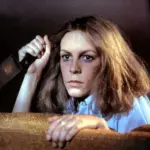As a devoted fan of the original How to Train Your Dragon animation, I couldn’t resist dashing to the theater for the live-action remake. Seeing Toothless nuzzle Hiccup’s palm on the big screen again moved me to tears—just as it did 15 years ago. After the credits rolled, I was thrilled to discover that the new film was every bit as good as the original. Fueled by that wave of euphoria, I immediately rewatched the animated version and realized why the remake managed to replicate its success: the remake followed the same story beat for beat, but now with fully upgraded visuals and special effects.
Afterward, my feelings about the live-action movie grew more nuanced, and I quickly found myself caught in a moral whirlpool. On one hand, I really enjoyed watching this film; on the other hand, that enjoyment contradicted my usual sneer at Hollywood’s obsession with remakes, adaptations, sequels and spinoffs. Simply put, I seemed to love a product made by the very system I claimed to oppose—a contradiction not unlike a Trump supporter admitting that Chinese-made goods are indeed great value for money.
Just recently, Sinners became one of the highest-grossing original live-action films in 15 years, racking up US$270 million at the box office—second only to Inception’s US$290 million. Sinners has now entered the top three hits at the North American box office for the year, while the two adapted/remade works ahead of it—A Minecraft Movie and Lilo & Stitch—have box office takings of US$420 million and US$380 million respectively. In fact, since 2010, every annual North American box office champion—except for Avatar (US$740 million)—has been an adaptation or a sequel. In other words, with few exceptions, Hollywood’s original films could hardly match the market scale of remakes and sequels.
Against this backdrop, it seems unfair to lay the blame for Hollywood being filled with boring remakes and sequels entirely at the feet of studios and those Hollywood decision-makers who, in actress Dakota Johnson’s words, “don’t have a creative bone in their body.” Hollywood could produce whatever it wants; if audiences don’t wish to watch, they should simply vote with their feet. But in reality, audiences are telling studios—through box office receipts—that they love adaptations and sequels. How else do we explain these works consistently dominating the charts? Even viewers like me, who profess to despise adaptations and sequels, nevertheless jump ship from original content the moment a new installment in a beloved IP appears. In other words, the success of remakes and sequels is a pact forged by both Hollywood and its audiences.
That said, audiences neither have to bear the responsibility for all those boring or terrible adaptations and sequels—though we, in practice, have no choice but to do so—nor do they need to reflect on their own shallowness and short-sightedness. In fact, tracing the rise of Hollywood’s remake-and-sequel industrial complex reveals how cleverly this commercial system exploits our emotions and enthusiasm, again and again.
We need not recap everything from a long time ago, but we must mention a galaxy far, far away. George Lucas’s original Star Wars trilogy achieved unprecedented commercial success and profoundly reshaped Hollywood’s business model. The trilogy's North American box office exceeded US$1 billion (not adjusted for inflation), and by the end of 1978, Kenner, which held the Star Wars toy merchandising rights at the time, had sold more than 40 million action figures, generating more than US$100 million in gross revenue—proof of the immense profit potential in sequels and merchandising.
Since then, the highest-grossing Hollywood film genres have been almost exclusively high-investment sci-fi, fantasy, and action pictures. As the Harry Potter series and the Marvel Cinematic Universe continuously shattered box-office records, studios—eager to expand global markets, mitigate the high risks of big budgets, and satisfy financial backers—fell back on proven formulas: adaptations and sequels.
As the saying goes, “If it ain’t broke, don’t fix it.” For decades, this strategy has delivered steady returns. Hollywood discovered that audiences often pay not for perfection, but for familiarity and emotional connection—just look at the frenzy over A Minecraft Movie.
Yet this pattern carries risks: it drains audiences’ genuine passion and undermines the industry’s willingness and ability to invest in original ideas. Original films’ share of the North American box office plunged from 51 percent in 1999 to just 17 percent in 2023. That collapse suggests that banking on remakes and sequels may have reached a tipping point. Consider Disney’s live-action remakes of classic IPs: while Cinderella, Beauty and the Beast, and The Lion King once felt infallible, Snow White’s failure forced Disney to cancel its planned Tangled remake.

We viewers can’t dictate Hollywood’s slate, but when I bought the ticket for the live-action How to Train Your Dragon, I was casting a dollar-vote for the industry’s future. Every time we pay to watch Hollywood films, we reinforce a familiar formula. We gripe about the tide of remakes, yet we willingly line up for them—Hollywood has grasped this paradox perfectly, and will continue to squeeze it for all it’s worth. Someday, when we watch Toothless nuzzle Hiccup’s palm for the 10th time, will we still cry?
Will Hollywood change? Rest assured, when money stops flowing in so easily, transformation will come. They may lack creative bones, but their fingers count dollar bills with nimble precision.








Share your thoughts!
Be the first to start the conversation.